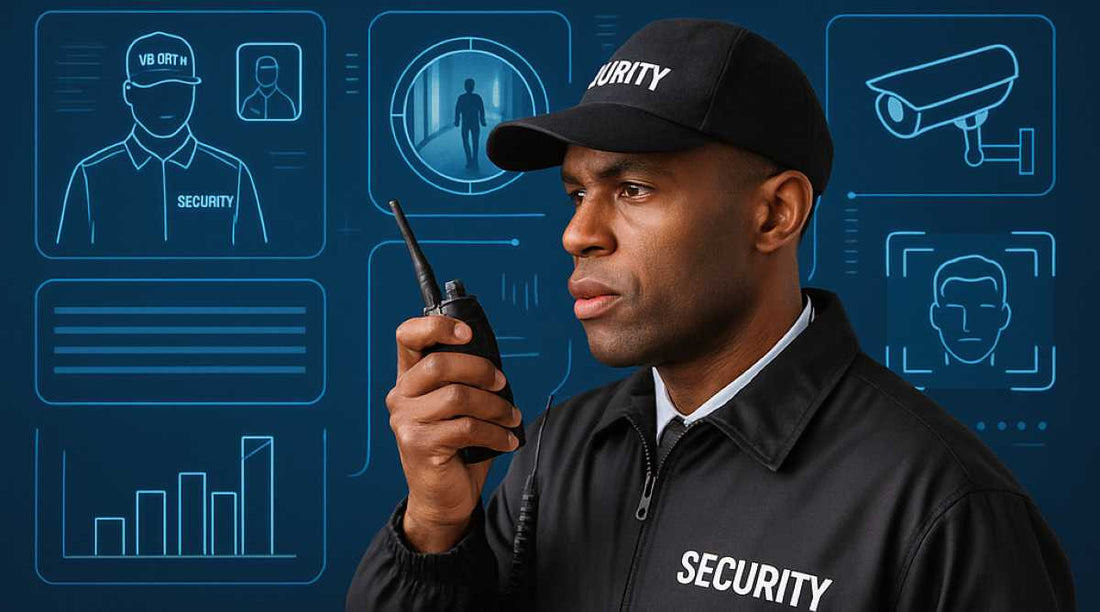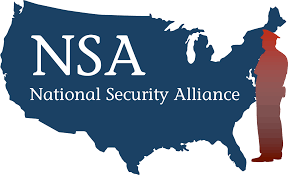
Discover how new tech like AI, drones, and biometrics is reshaping guard duties—and why modern training is critical in 2025 and beyond.
How Emerging Tech Is Reshaping Guard Training and Security Operations
Randi Sherman
4 - Minute Read
Technology is transforming every aspect of our lives, and the security industry is no exception. We are experiencing rapid shifts in how threats are detected, monitored, and managed. Today’s firms are responsible for ensuring their guards are updated and comfortable with the new tools and techniques; it’s not just about staying competitive, it’s also necessary to maximize effectiveness, security, and client trust.
From AI-powered surveillance systems to real-time communications, biometric access control, virtual monitoring, and drone surveillance, modern security is smarter and more efficient than ever before.
The bottom line? Guard roles are evolving, and adapting to these innovations is no longer optional—it’s necessary.
So today, let’s dive into some of the exciting trends in security technology and explore their impact on guards and the broader security landscape.
Five High-Tech Security Trends to Watch in 2025
1. Smarter Surveillance Systems
Surveillance systems are nothing new. CCTV cameras and sensors can help guards cover large areas and multiple locations remotely, giving them visibility into dark or inaccessible places that would otherwise be a significant security risk.
What’s different today? Artificial intelligence (AI) for one. AI enables advanced facial recognition technology and behavioral detection, offering the ability to identify people and suspicious behavior with a high degree of accuracy. Footage is analyzed, providing detailed descriptions and footage that can be instantly shared with law enforcement even before they arrive on-scene.
The Impact on Guards: Training is imperative to ensure technical competency. More rapid response protocols are needed as data is delivered in real-time and must be acted upon appropriately.
2. Rise of Artificial Intelligence in Threat Detection
AI-powered threat detection allows guards and stakeholders to take a proactive stance against suspicious behavior and criminal activity. While systems are not perfect, they can alert guards to potential risks and may reduce the resources required to respond to the situation. In some cases, response times can be reduced from minutes to seconds, putting first responders at the scene faster and preventing unnecessary injury and loss.
Use cases for threat detection include analyzing crowd behavior or simply flagging anomalies for guards to follow up on. AI can process massive data sets, putting multiple eyes on a situation and extending a guard’s capabilities and reach.
Impact on Guards: Guards must learn to interpret AI-generated reports and collaborate with AI systems to help them learn and gain accuracy.
3. Biometric Access Control
Biometrics include fingerprints, facial, retina, and voice recognition systems and are fast replacing traditional keys, passcodes, and cards in high-security environments, reducing (but not replacing altogether) the need for physical checks or access control. Biometrics also integrates with cloud-based systems, providing high accountability and a verifiable record of who has gained access to the premises.
Impact on Guards: Guards must approach access control differently, applying new protocols to manage and enforce the properties they protect. Privacy concerns may arise as some individuals may not be comfortable with having their data stored within the security system. Tact and training are necessary for guards to know how to respond in such situations. Additionally, biometric scans can sometimes return false results. Hence, human oversight is essential to prevent unauthorized access or denial of valid access.
4. Drones and Robotics
Drones and robots are frequently used to patrol extensive or potentially dangerous areas. Commercial and industrial settings commonly use robots and drones to ensure consistent surveillance and reduce the cost of patrolling environments where more traditional methods are insufficient or inefficient. Use cases include perimeter security, event security, residential security, search and rescue operations, and disaster support.
Impact on Guards: Guards must learn to coordinate with autonomous systems, shifting from active to supervisory roles. Understanding how to interact with these technologies is critical as they become more integrated into the security toolkit.
5. Cybersecurity and Physical Security Convergence
Guards today are encouraged to become more knowledgeable about cybersecurity threats and how they converge with physical assets. Today’s threat environment includes hybrid (physical and digital) threats, underscoring the critical nature of having at least a basic cybersecurity knowledge. Such knowledge is essential when working with any digital tool, as breaches can be massively damaging for both the client and their systems.
Impact on Guards: Basic cyber training has become essential, ensuring guards know how to recognize and respond to cyber threats. Education is the best protection, as most breaches stem from social engineering tactics, like phishing or malicious links.
The Implications of Security Technology on Guard Training and Skills Development
Rapid tech advancement in security has transformed the modern approach to guard training. While new guards may undergo robust tech training, guards who trained and gained experience in decades past will need up-skilling and specialized training to bring them up to speed.
Guard training, especially where technology is concerned, is never one-and-done. Continuing education is essential to ensure training is up to speed with the latest advancements, and doing so gives guards (and firms) the edge when competing for new work.
It’s about more than being tech-savvy; guards must be adaptable and willing to learn new approaches when available.
As tech evolves, clients will inevitably demand more personalized security solutions. Firms that cater to those needs will have a distinct advantage, putting them at the forefront of security innovation.
Final Thoughts: How Tech-Literate is Your Guard Force?
Today’s security technology is helping to reduce costs, gain efficiency, and improve security outcomes in commercial, residential, and industrial settings. AI-powered tools are helping to streamline access control, make reporting more accurate, and can even prevent crime through predictive behavioral analysis.
As security tech advances, firms must take a proactive stance on guard training, upskilling, and re-skilling to stay relevant. Gone are the days when all a guard had to do was foot patrol. Familiarity with the technology, hardware, software, and use cases, and a firm understanding of its limitations, is integral in basic guard training.
We invite firms and guards to embrace innovation, invest in training, and evolve with the times. If we can be sure of one thing, where tech is concerned, there’s no turning back. The future is here, and we must adapt.






